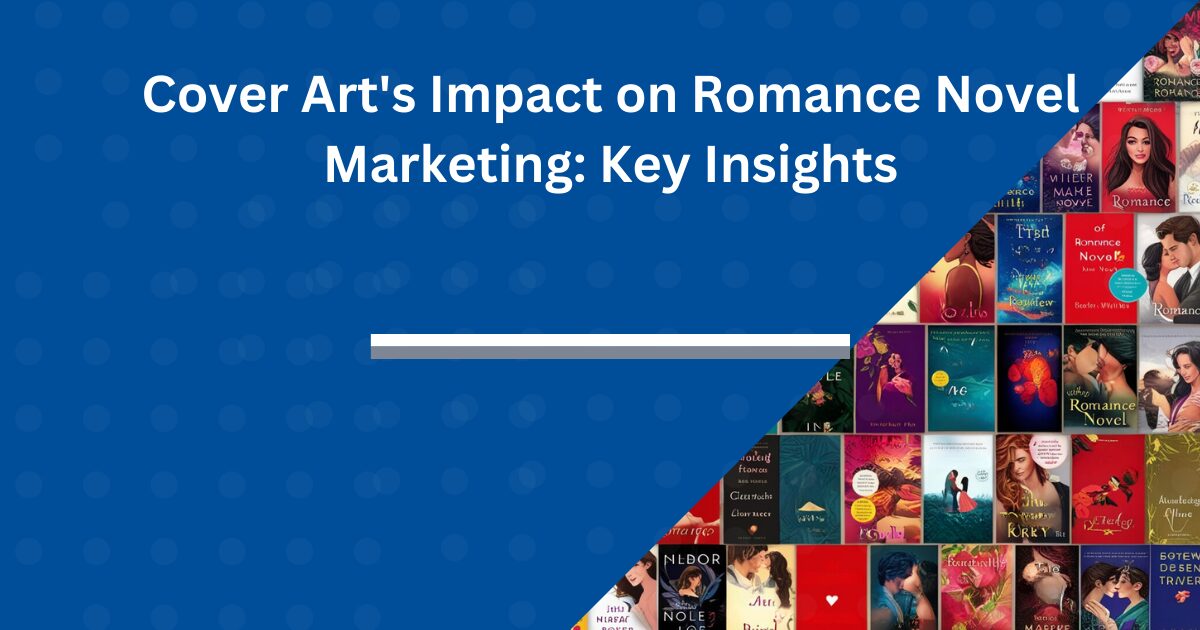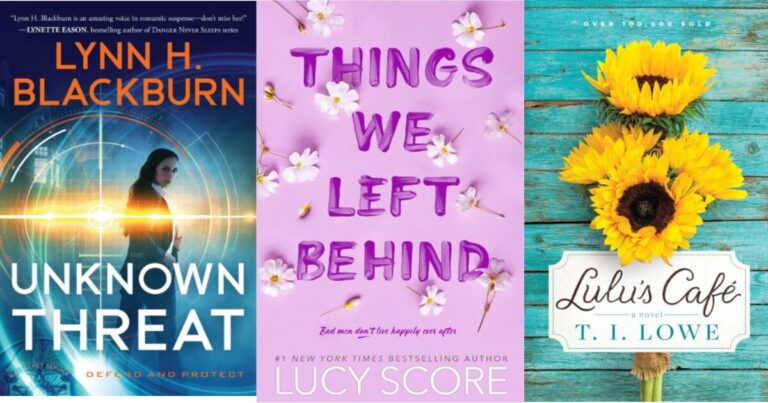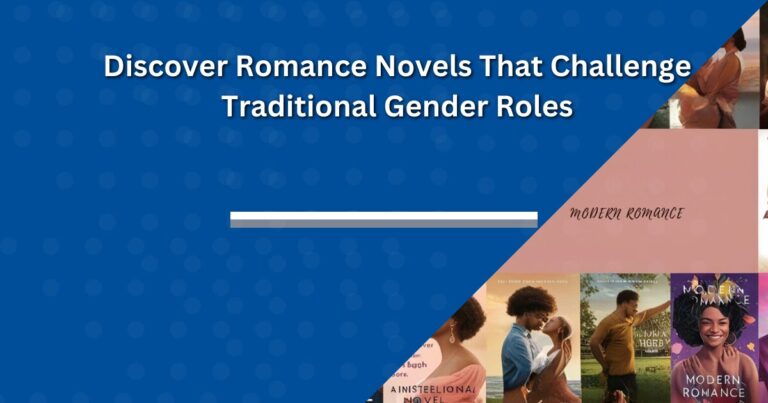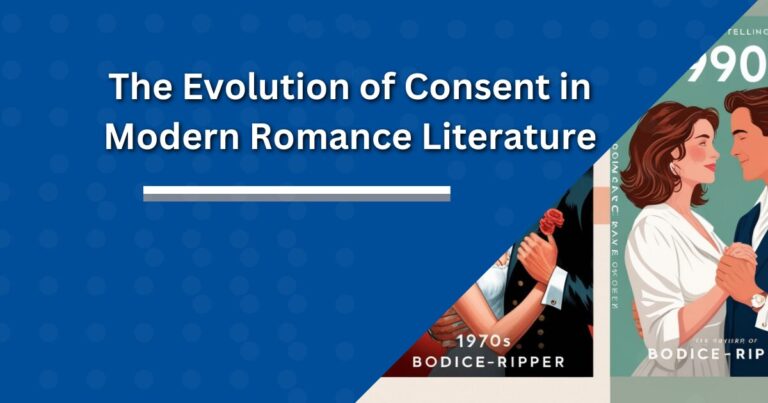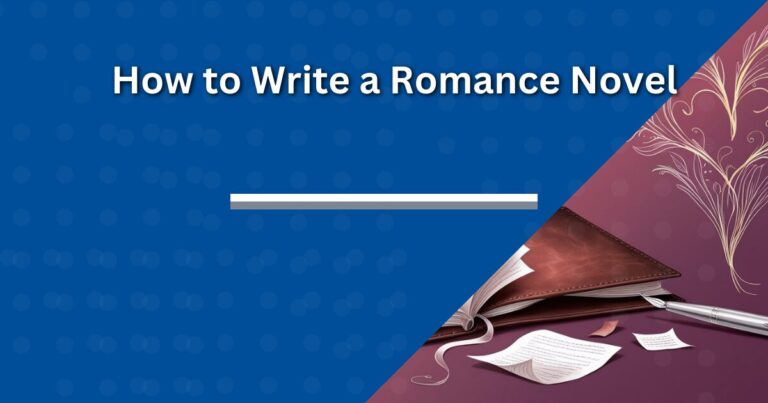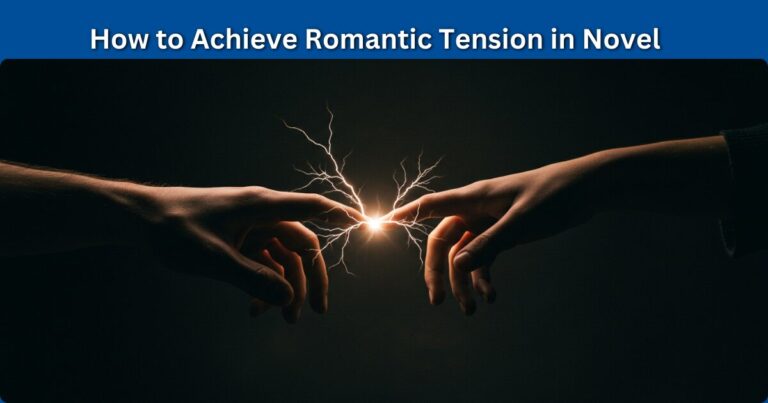Cover Art’s Impact on Romance Novel Marketing: Key Insights
Romance novels' covers entail a great deal of soft hues and styles and this explains why such type of cover art is important in driving the purchasing behavior of the buyer.
A picture is worth a thousand words, or in this case, a thousand sales, in the vibrant world of romance novels.
Today, we shall explore the very interesting subject of cover art and how it impacts the marketing of romance novels.
From passionate embraces to quiet metaphors, these visual gateways are considered the make or break of the book's success.
Pick up your favorite bodice-ripper, and join me as we reveal the secrets locked behind those alluring front covers.
Romance Novel Cover Art: Key Takeaways
- Cover arts are a big plus and will lead to sales improvement (as high as a 50% increase).
- In particular, don't ignore psychology; colors and pictures affect feelings.
- Trends: Illustrated covers, diversity, bold designs, custom-made covers (heroic elements).
- The design covers of e-books need to be simple and eye-catching.
- Print covers allow you to include more content.
- It is really important to have diverse representations as that sells well.
- Cover art is one of the most important tools of promotion (social media, merch).
- Working with an artist and an influencer improves promotion.
- Adapting covers for different formats is essential.
- A great cover always excites readers to go through the entire book.
- Your book cover sets the first impression of a book. Make an enduring impression.
The Psychology of Romance Novel Covers: It's All in Your Head (and Heart!)
Before a friend of mine became a romance author, she was, somewhat, of a cover snob. She'd roll her eyes at the muscular heroes and flowing-haired heroines, thinking she was “above” all that.
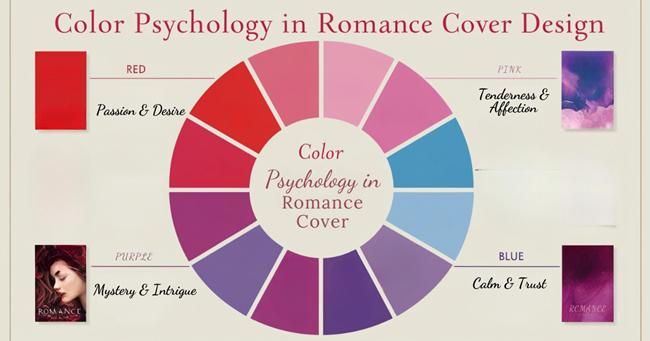
She later found out that she was wrong.
It wasn't until she started working with cover designers for her own books that she realized just how much psychology goes into every single element of a romance novel cover.
Color psychology as regards design covers in romance, is really no joke. For example, red color triggers emotions like excitement, passion, and love – exactly what romance readers are looking for.
But it's not only about the color. Visual elements that provoke emotions are carefully selected for you to feel it all.
That image of a hero's half unbuttoned shirt?
It's not just eye candy (okay, it's a little bit eye candy). It's designed to create a sense of intimacy and vulnerability, making the reader feel like they're being invited into a private moment.
I was attending a book fair and there was this young lady who approached me with tears in her eyes. She took a book cover and pointed to the curvy heroine and said, “Wow! That is the first time I am seeing someone like me on a romance novel! I am grateful to the author for featuring her.“
What an unbelievable shot to the heart!
Those words illustrate the importance of portraying characters and relating them to the audience.
The instant readers see someone who looks like them on the cover of a book, a bond between the reader and the book is formed. Hence, increasing the chances of the reader picking up the book.
Lastly, cover art sets expectations concerning the story in ways you may not even pay attention to.
Are those two on the cover of your book happily huddled together, or are they busy in one passionate kiss?
Are they in modern clothes or period costumes?
Is there a hint of magic or supernatural elements?
All these inform the readers, instantly, regarding the heat level, sub-genre, and the general feel of the story. It is more of a visual outline of what readers want at any given moment.
So next time you find yourself being lured by a romance novel cover, spare some time and think about the psychology involved. It's not just a pretty face – it's a carefully crafted emotional experience designed to sweep you off your feet before you even read the first page.
Evolution of Romance Cover Art Trends: From Bodice-Rippers to Modern Marvels
All right, let us take a walk down memory lane.
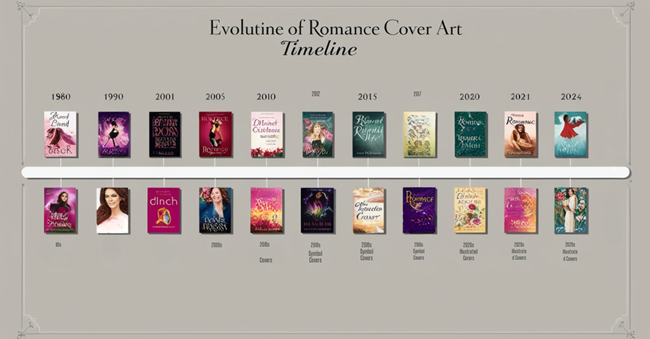
When I first fell in love with romance novels (sneaking them from my older sister's bookshelf, shh!), the covers were… well, let's just say they were a product of their time. We're talking long-haired Fabio lookalikes, women with gravity-defying bosoms, and enough windswept passion to power a small city.
Analyzing the evolution of romance book covers almost feels as if one is attending an accelerated course of cultural evolution.
Remember those classic covers typical of the 80s and 90s?
They were purely about fantasy or escapism.
Related: The Evolution of Consent in Modern Romance Literature
It wasn't long before societal attitudes changed and the genre became more accommodating. This altered the covers as well. We went from bodice rippers to more sophisticated and symbolic covers.
Remember the era of hands touching or mysterious objects on dark backgrounds?
That was publishers trying to make romance “respectable” (as if it wasn't already, hmph!).
Let's talk about what's hot now.
The current trends dominating the market are all about bold colors, diverse representation, and a mix of photographic and illustrated styles.
I cannot contain my excitement about one more trend: empowered heroine covers have started to emerge. Rather than depicting women who are pets to the heroes or damsels in distress, the covers now show powerful women.
It is about time!
Related: Trends and Analysis of Feminist Themes in Modern Romance
But this is where it becomes even more interesting: cover art trends according to a specific subgenre.
Paranormal romance?
Expect those moody dark colors with a splash of more of the supernatural.
Historical romance?
Period appropriate costumes and setting are essential, but with a modern touch that resonates with today's market.
And let me not even get into contemporary romance. Rather, let me close up with this: the illustrated cover revolution has invaded this sub-genre without restraint.
While talking about that, let's focus a bit more on that phenomenon…
The Rise of Illustrated Covers in Contemporary Romance: A Love Story
Imagine that I am browsing through Amazon and, voila, I come across a cute cover with some funny looking people and big letters.
Guess what?
“The Bromance Book Club” by Lyssa Kay Adams was the book. It was love at first sight.
What I didn't know, however, was that it was the beginning of a major shift in contemporary romance cover design.
Highly illustrative covers are appealing for completely visible reasons. For instance, they are fun, fascinating and incredibly eye-catching in the crowded digital marketplace.
In a sea of photographic covers, these colorful illustrations pop like fireworks.
In addition, they enable so much more imagination and creativity which perfectly matches the tone of many contemporary romances.
But here's the kicker: the impact on sales and reader demographics has been huge. Illustrated covers have been drawing in more of the younger audience and even those readers who wouldn't have taken up a ‘normal' romance novel.
Many readers have told me that they are able to read these books in public without shame and that they no longer needed to hide their romance novels behind newspapers on trains anymore.
Illustrated covers offer more flexibility in depicting various characters with various body types compared to traditional photographic covers. They can also express the fun loving and humorous nature of many of today's romance novels without using the ‘hot kiss' images (not that a good kiss is a bad thing).
Would you like to see some of the best visual contemporary romance book covers that were a huge success?
Read “The Ex Talk” by Rachel Lynn Solomon and “Get a Life, Chloe Brown” by Talia Hibbert or “Beach Read” by Emily Henry. These book covers are not just beautiful, they have been a sales powerhouses that have transformed the face of romance books in the bookstores.
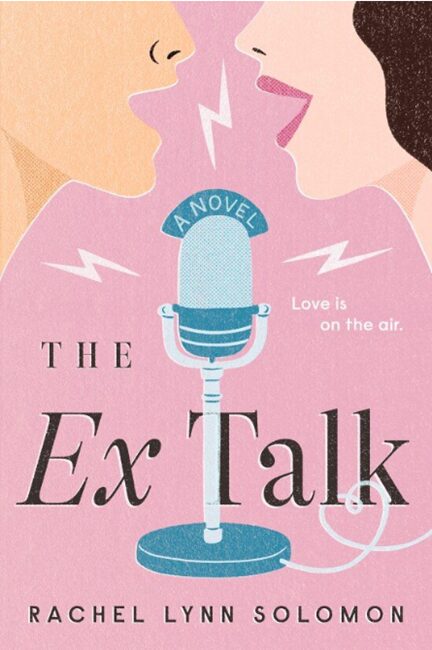
The illustrated cover trend continues up to this present day, but who knows what the future holds?
I'm excited to see how cover design continues to evolve and push boundaries. There is one thing which is sure – it will not be one bit boring!
Cover Art's Influence on Romance Novel Sales: Show Me the Money!
Okay, let's talk straight: how much does cover art really matter as regards to sales of romance novels?
Get ready, the numbers might surprise you!
Romance novel covers are crafted to attract readers and instantly convey the genre, often featuring familiar elements like embracing couples and shirtless men. These iconic visuals play a major role in influencing reader purchase decisions, as seen in data linking cover art to higher book sales.
Let's look at some case studies of cover redesigns and their effects.
The “Bridgerton” series by Julia Quinn saw a massive surge in sales after Netflix announced its adaptation, with a 700% increase for the first book, “The Duke and I,” following a cover redesign to match the show's branding.
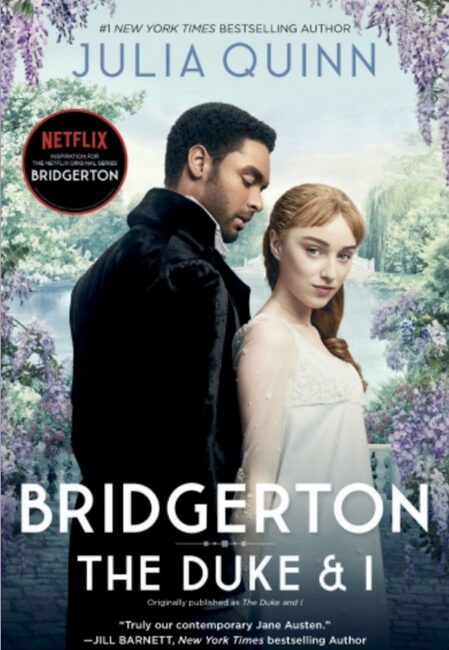
This success highlights the powerful impact of cover makeovers on book sales.
Now, here's where things get really nerdy (in the best way): A/B testing, and this one is on cover art optimization.
Big publishing houses and savvy indie authors are using data to fine-tune their covers for maximum impact. They will have two different covers designed for one book and see which one turns more sales, clicks, and even pre-orders.
It is like ‘The Bachelor' but for book covers – may the best design win!
And now talking about pre-orders, I would like to focus on the issues dealing with the effect of cover art on pre-order and success on launch.
An appealing cover can either capture or totally shatter any attempts at marketing a book before its actual release. There is power in a good cover art.
The summary?
In a romance genre where readers are voracious and the market is crowded, a great cover design is not just nice to have – it is essential for success. It is the first sales pitch for the book, a flirty wink over the bookshelves.
Make it count!
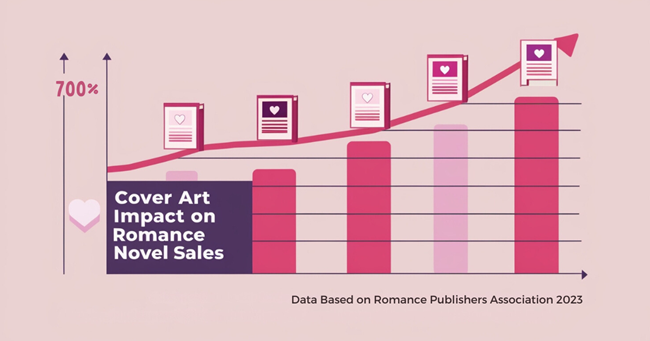
Diversity and Representation in Romance Cover Art: About Damn Time!
Let's get real for a minute. The romance genre hasn't always been great at representing diverse characters on its covers.
For years, it was all chiseled white guys and willowy white women. But thankfully, times are changing, and the importance of inclusive cover art in today's market cannot be overstated.
I remember the first time I saw a plus size heroine grace the cover of a romance novel. It was Talia Hibbert's “Get A Life, Chloe Brown”, – and I actually teared up in the middle of Barnes and Noble.
If you are plus size and have never seen yourself on the cover of a romance novel before, this will be an incredible experience. And you are not the only one – the influence of diverse covers on readership and sales is great.
However, let's face it – it has been difficult to represent many diverse characters. Some publishers were hesitant, worried about alienating their “traditional” audience. While some got it wrong by racialization of their characters and stereotyping them.
It has been an eye-opener for the industry as a whole.
But there are positives as well.
More progress is being registered for encouragement. The cover images that are now appealing to the readers highlight the races, body shapes, ages, and even abilities of the characters.
And readers like it.
An Asian American autistic heroine in “The Kiss Quotient” by Helen Hoang or “Red, White & Royal Blue” by Casey McQuiston about a romance between a same-sex couple have been a hit on both the market and critics.
Wish to see some success stories about diverse romance covers?
Grab Alyssa Cole's “A Princess in Theory” that shows a beautiful dark-skinned woman in a ball gown on her cover. Or Adriana Herrera's “American Dreamer“, where two men of color are pictured hugging.
These covers are not only pretty. These covers are revolutionary as well.
In simple terms, the romance genre is all about love in its many forms. It's high time our covers reflected the beautiful diversity of love in the real world. We still have a long way to cover, yet, I am positive of where we are headed.
Love is love and no one should have to look for ‘a happy ever after' and not see themselves in it.
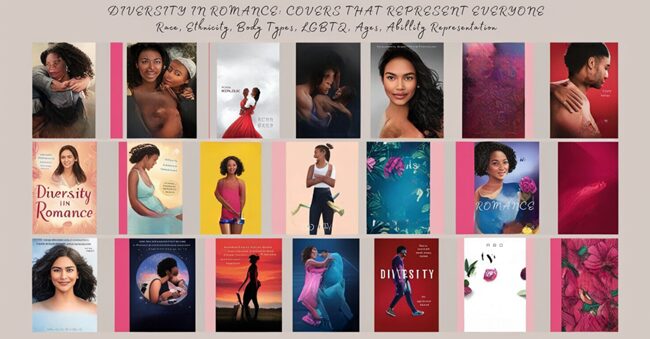
Digital vs. Print: Adapting Cover Art for Different Formats
Designing a cover that works across all formats is like trying to write a love scene that's steamy enough for erotica fans but tame enough for your grandma to read. It's a delicate balance, and it's become one of the biggest challenges in romance cover design.
Designing covers that pop in thumbnail size for e-books is an art form in itself. What is needed are bold designs with clear typography.
That beautiful and precisely detailed castle positioned at the back drop of your historical love story?
It's going to look like a smudge on a phone screen.
So now, you should always tell your designer and insist, that for every book cover, you want to see the cover at thumbnail size before approving it.
Keep the ball rolling, please!
There is a completely different story when it comes to paperback vs hardcover. Paperbacks need to catch the eye from across the bookstore, while hardcovers often aim for a more “premium” feel.
And don't even begin to talk about audiobook covers!
They're like the rebel cousin of the cover art family.
How audiobook covers differ from print and e-book versions is fascinating.
Since listeners often choose audiobooks based on tiny cover images in an app, these designs need to be even simpler and bolder. Also, you've got to consider how they'll look on various audio platforms.
One doesn't have to be a genius to tell that this is insanity.
So, what is one to do, especially an author or a publisher?
The key is creating cohesive cross-format cover art strategies. One solution I successfully applied is first to think in terms of digital design, then adapt to the print solution. It's easier to add complexity than to simplify an overly detailed design.
Another way is to build a distinctive brand around the book and its series allowing it to cut across all formats. This might mean using a consistent color palette, a unique symbol or icon, or a distinctive typography style that remains readable whether it's on a 6-inch e-reader or a hardcover dust jacket.
Try to work closely with your audiobook producers to ensure the cover art translates well to that format. Sometimes this means creating a completely different design for the audio version, but one that still feels connected to the print and e-book covers.
The bottom line?
In today's multi-format publishing world, flexibility is key.
A great cover needs to be a chameleon, adapting to whatever format it finds itself in while still maintaining its essential appeal.
It's a challenge, for sure, but when you nail it?
Pure magic.
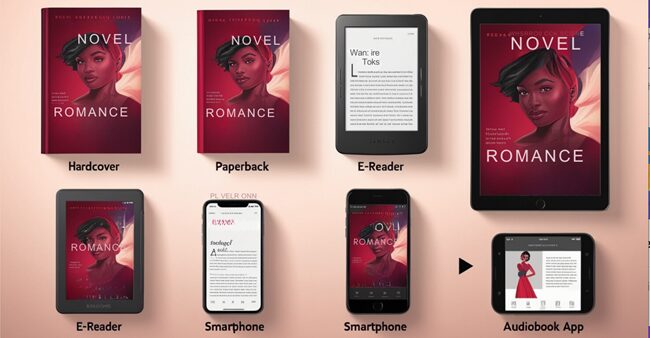
The Cover Artist's Perspective: Painting Love, One Book at a Time
It's worth mentioning that, a few of years back, I thought that being a cover artist was the easiest thing on the face of the earth. Slap some attractive people in a clinch, add a fancy title, and voila!
How naive I was.
After years of seeing how cover artists work, I have developed a totally new outlook towards the task of designing a cover of a romance novel.
Over the years, I have been able to interview a few well known cover artists who specialize in romance, and these are some of the things that I've heard from them.
One lady, whom we shall name Jane, said designing a romance cover is like ‘trying to bottle lightening while it is still flashing‘ You're trying to convey an entire emotional journey in a single image.
No pressure then, right?
Another artist, let's call him Miguel, made a toon out of it comparing it to matchmaking. “This is not just a fairly attractive illustration that you are making” he said. “You're introducing the characters to the reader and hoping they fall in love at first sight.”
I admire such perspective – it truly shows the emotional connection that a great cover can create.
Balancing author vision with market trends can be tricky. As an author, you have this vivid image in your head of what your cover should look like. However, at times, that vision doesn't align with what's selling in the current market.
The creative process of the cover of the romance novel is quite interesting. Typically, most of the artists will begin with the reading of the book or, at least, a summary of the book to get a feel for the characters and the story's tone.
After that they will conduct a marketing analysis of best selling covers in the same sub-genre. From there, it is pretty much about sketching, digital editing and lots of other exchanges with the author and publisher.
But it's not all glamorous photoshoots and artistic inspiration. Cover artists face some unique challenges in the romance genre. For one, there's the constant pressure to create something fresh and eye-catching in a market that's seen it all.
How many ways can you pose a shirtless man before it feels repetitive?
Turns out, quite a few!
These artists are seriously creative.
Another challenge is the rapid pace of trend changes in romance cover art. What's hot today might be passé tomorrow.
I chatted with a cover artist, let's call her Amelia, who told me she sometimes feels like she's chasing a moving target. “Just when I think I've mastered the illustrated contemporary romance style,” she said, “suddenly everyone wants dark, moody paranormal covers again.”
And let's not forget the technical challenges. With the rise of digital reading, artists now have to create designs that look good at multiple sizes and on various devices.
It's like trying to paint the Mona Lisa on a grain of rice and a billboard simultaneously.
Marketing Strategies Centered Around Cover Art: Making Your Book the Belle of the Ball
Alright, fellow romance enthusiasts, let's talk marketing.
I've learned that a great cover isn't just eye candy – it's a powerful marketing tool. And let me tell you, learning to leverage that tool effectively can be a game-changer for your career.
Using cover art in social media marketing campaigns is like having a secret weapon in your promo arsenal.
When I first started out, I'd just post a picture of my book cover with a caption like “Buy my book!” (Cringe, I know.)
But then I started getting creative. I'd zoom in on interesting details of the cover for teaser posts. I'd create quote graphics using the cover's color scheme. I even ran a contest where readers had to guess the meaning behind certain cover elements.
Engagement skyrocketed.
Related: The Impact of Social Media on the Romance Genre
One of my favorite marketing strategies is the cover reveal event.
Oh, the anticipation! The excitement!
The impact on pre-launch buzz can be huge. I teamed up with a popular romance blog to do an exclusive cover reveal. We built it up for weeks, dropping little hints and teasers. By the time we actually revealed the cover, my readers were practically frothing at the mouth with excitement.
Pre-orders went through the roof.
But here's where it gets really fun: merchandising opportunities stemming from popular cover art.
It is possible to, eventually, see your book cover on a tote bag. Readers love having physical mementos of their favorite books.
I've seen everything from bookmarks and phone cases to throw pillows and even shower curtains (yes, really) featuring romance novel covers. It's a great way to extend your book's reach and give superfans something to get excited about.
One of the most exciting developments I've seen recently is the rise of collaborations between authors, artists, and influencers. You can partner with popular bookstagrammers to create special edition covers.
They can provide input on the design, and in return, promote the book to their followers. It was a win-win – you get exposure to their audience, and they get to be part of the creative process.
I've also seen authors collaborating with artists to create stunning alternative covers for special editions or retailer exclusives. It's a great way to breathe new life into backlist titles or create collector's items for dedicated fans.
I just want to give one warning – do not take any marketing actions which are contrary to either your brand or your readers' expectations. For instance, you may try to jump on the “animated cover reveal” trend, but it just may not resonate with your historical romance readers.
It's all about knowing your audience and what makes them tick.
The key to successful cover art-centered marketing is creativity and authenticity. You can let your imagination run wild but ensure that it corresponds to your image and the facts of the story.
Your cover is the face of your book – make it work hard for you!
And the last thing. The story behind the romance novel's cover is a really interesting intersection of the domains of art, psychological aspects, marketing perspectives, and simply story-telling.
There is a lot more than what you see on these covers coming from the psychology behind color choices to the rise of diverse representation, from digital adaptations to creative marketing strategies.
It is thrilling to think of the directions which romance cover art may go in the future.
Will we see more interactive covers for e-books?
AR experiences triggered by a print cover?
There are no limits!
A great cover is an invitation – an invitation to escape, to fall in love, to experience something new.
Hence, next time you find yourself drawn to a romance novel cover, go ahead and accept that invitation. You never know what wonderful story might be waiting for you inside.
You're feeling inspired to dive deeper into the world of romance novel covers, why not explore a gallery of top-performing romance novel covers?
Who knows, you might just find the title of the romance book you will read next – or the inspiration for your very own masterpiece.
FAQs
How important is cover art for romance novel sales?
Super important!
Romance novel cover illustrations can help increase sales by 50%. This is your book's cover and the first impression, so make it count. Think bright colors, bold title, and images that reflect your story's mood.
People really do judge books by their covers, and in this instance, by romance covers.
What are the current trends in romance novel covers?
Illustrated covers are hot, especially for contemporary romance novels. Diverse representation is important. Bright colors and typography that stand out in any small screen device are necessary.
For covers of historical romance, think elegant and period-appropriate with a modern twist.
For paranormal, dark and mysterious is still the way to go.
How can I make my e-book cover stand out on Amazon?
Keep it simple and bold. Use bright colors and big, bold, clear text that's easy to read as a thumbnail. Don't use small images – they will disappear.
Limit yourself to one main image or design that represents the content of the book. Test your cover by viewing it at small sizes to make sure it pops on screen.
Should I use the same cover for print and e-books?
It is advisable to modify the cover to fit each of the formats.
E-book covers should be simpler with larger text while the print covers can have more detail. But keep a consistent style across formats so readers recognize your book. If possible, employ a designer who can create versions for print and digital.
How can I use my book cover in marketing?
Get creative!
Use your cover in social media posts, create teasers with cover details, or host a cover reveal event. Make merchandise like bookmarks or tote bags. Work with bookstagrammers who might be interested in the cover for special editions.
Always remember that your cover is a powerful marketing tool – show it off everywhere you can.
